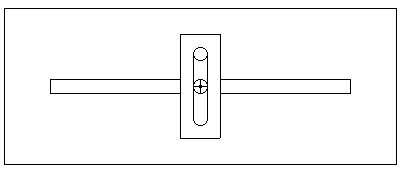
You may not realize it, but you come into contact with an actuator every single day. An actuator is a mechanical or electro-mechanical component of a system that controls the movement of an instrument. These movements are very deliberate with precise positioning and they manage the workings of anything that requires a mechanical force. They get everything moving, literally. Actuators operate motors, doors, valves, everything! Equally as important to the actions they create, actuators are also designed to prevent movement, when required. There is not a single industry that is not reliant on actuators.
Keep Things Moving
Actuators roll two ways. There are linear actuators that deliver a push/pull type of movement to produce a straight line. Think about automatic doors opening and closing. Then there are rotary actuators that provide a controlled (spoiler alert) circular movement. A cool example of this is a clamp. It’s an actuator that gives the clamp permission to open and close.
Then they need to work. This requires a power source, something to convert that power into a mechanical force and a controller to make sure it’s doing the task it’s supposed to do to achieve the desired result.
The energy source can be manual, electrical, hydraulic, or pneumatic. All these options can be applied to both linear and rotary actuators and offer different advantages. Manual actuators are less common in industrial settings, so the remainder of this article will act like they do not exist.
Linear Actuators – By Energy Source
Electric linear actuators use a motor to generate fast motions and a gearbox to slow down its output. This increases the torque used to turn a screw and creates the direct movement of a shaft.
Hydraulic linear actuators achieve the same result using hydraulic pistons to produce torque strong enough to move what needs to be moved. Hydraulic actuators are capable of producing huge amounts of torque but can be a more unbalanced energy due to shaft displacement.
Pneumatic linear actuators are similar to hydraulic actuators but use compressed air instead of fluid to create movement. They are fast, cost effective and precise and can handle a bit of a beating like abrupt stops. Since they are powered with air, they are a safer alternative in scenarios with a higher risk of explosion, like mining.
Rotary Actuators – By Energy Source
Like the linear version, electric rotary actuators use electricity to achieve the desired movement, which in this case is circular. This can be a full 360° rotation or stopped at a set angle. Rotation and torque are generated as a result of the force from the conductor carrying a current within a magnetic field.
Hydraulic rotary actuators leverage either one or two circular shafts that travel using defined grooves. When the teeth on the shaft connect to splines on a piston, the shaft will rotate. This is achieved when the hydraulic fluid from a control valve puts pressure on the pistons and applies a force on the shafts. If the valve is shut, the shaft will be locked in place.
Like the linear version, pneumatic rotary actuators, are relatively simple and ideal for applications in dangerous environments. These actuators essentially tweak their linear cousin to create a rotation. There are different methods to achieve this. One example is a slotted link mechanism. This creates a reciprocating motion by moving a slider back and forth and converting it into a rotation. A piston will be directly coupled to the slider via a pin attached to the rotating portion.

By BRoys - By Uploader, CC BY-SA 2.5, https://commons.wikimedia.org/w/index.php?curid=1526011
A day doesn’t go by when you don’t encounter at least a dozen actuators. They are the silent heroes of our day to day, and only get noticed if they don’t work properly. When testing them, the environment of their application and the physical force pushing against the end-product are key considerations for success. If not executed properly, the consequences can be minimal like having to push up the back of your recliner manually. On the other hand, they can be disastrous, like the flaps on the wing of an airplane not opening or closing when they are supposed to. Regardless of the application, it’s always best when actuators remain unnoticed.
For more information on customized simulation systems, please contact Averna.
Looking for an energy boost?
Here’s a look at some of the successes we have had courtesy of our pneumatics expertise.
Get in touch with our experts or navigate through our resource center.
